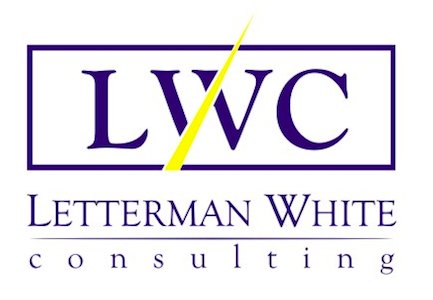The Missing Executive Role That Could Solve Your Company's Alignment Challenges
Challenges inherent to complex and large-scale business projects are well documented. Ambitious growth strategies falter despite having exceptional leadership within individual organizational units. The culprit? A lack of systematic integration across organizational boundaries.
Stanford University’s Dr. Heather Altman discovered a solution to this challenge in her research. “Integrators serve as bridges between different functional areas, creating cohesion where disconnects commonly occur.”
The Integration Problem
Consider Precision Innovations (a composite drawn from real-world examples). Despite having top talent leading HR, Training, Product Development, IT, and Performance Analytics, the company struggled with:
Disappointing performance
Declining employee engagement
Inadequate cross-functional collaboration
What was missing wasn't expertise or commitment—it was executive-level integration, which requires a formal leadership role focused on creating effective and efficient performance at all levels of the system:
Organization-level structures that align functional groups and cross-boundary collaboration to advance the organization’s strategy.
Group-level cross-functional integration that creates pathways for information sharing across units and enables teams to analyze data, identify problems and opportunities, and build responsive solutions
Interpersonal relationship building necessary for cross-functional teams to work effectively
Individual-level training and development essential for relationship-building, cross-boundary collaboration, and strategic thinking
According to Altman, effective "integrators" typically maintain multiple professional identities, focus on the big picture, and hold formal coordination roles that provide necessary authority. Most organizations do not have this formal leadership role. The extremely complex and high-level capability is orchestration itself by a conductor with understanding of both the functional units, organizational strategic goals, external stakeholders, and necessary individual skills
Altman identified four key responsibilities of this role: translating ideas so that all groups can understand them; ensuring that all voices are heard; negotiating between different group interests; and anticipating potential problems or conflicts ahead of time.
Translating abstract ideas so that all groups can understand them;
Ensuring all voices are heard;
Negotiating among different group interests; and
Anticipating potential problems or conflict.
At Precision Innovations, the Executive Leadership Team included the CEO, Chief Legal Officer, Chief Administrative Officer, Chief of Product and Service Development, and Chief Marketing Officer—but lacked someone specifically responsible for organizational integration.
Enter the Chief Organization Development Officer
Organization Development (OD) is defined as "a system-wide application of behavioral science knowledge to the planned development, improvement, and reinforcement of the strategies, structures, and processes that lead to organization effectiveness." Unlike traditional C-suite roles that focus on specific functions, the Chief Organization Development Officer (CODO) serves as the crucial integration mechanism at the executive table, bringing a systems perspective that bridges the gap between strategy formulation and execution.
Why This Role Matters Now More Than Ever
Today's business challenges have grown increasingly complex:
AI Integration: Companies must adapt evolving technological capabilities into their business processes.
Rising Customer Expectations: Stakeholders have a wide range of choices when thinking about where to spend and do business and Companies must discover what Customers are thinking and then move that information to where it is needed for responding effectively and efficiently.
Workforce Transformation: Employees must evolve from task performers to cross-functional thought leaders and quickly master new mindsets and skills.
What a Chief OD Officer Actually Does
The Chief Organization Development Officer's responsibilities include:
Alignment: Ensuring congruence between strategy, structure, workflow, culture, and talent development
Integration: Breaking down silos and facilitating cross-functional collaboration
Change Management: Designing and implementing systematic change processes
Talent Development: Creating frameworks that link strategic objectives to skill requirements
They ask the critical questions that other executives might miss and translate strategic priorities into workflow and talent lifecycle. As organizations face increasing complexity and accelerating change, the Chief Organization Development Officer ensures that structure, processes, culture, and talent strategies collectively enable strategic objectives across all functions.
The evidence is clear: the Chief Organization Development Officer role isn't a luxury—it's a strategic imperative for organizations seeking a sustainable competitive advantage in today's business landscape. Progressive CEOs who've added this role consistently report faster strategy execution, improved cross-functional collaboration, and higher success rates for major transformations. OD interventions can generate positive, lasting changes in an organization, where siloed approaches fail.
Additional Reading
Center for Global Organization Excellence, Stanford University. (2023). Stanford researcher sheds light on how complex cross-boundary business collaborations succeed. https://cgoe.stanford.edu/news-insights/news/stanford-researcher-sheds-light-how-complex-cross-boundary-business
Cummings, T. G., & Worley, C. G. (2021). Organization development and change (11th ed.). Cengage Learning.
Boss, R. W., Dunford, B. B., Boss, A. D., and McConkie, M. L. (2010). Sustainable Change in the Public Sector: The Longitudinal Benefits of Organization Development https://business.purdue.edu/faculty/bdunford/publication-links/jabs-od-paper.pdf
Organizational Development: An objective-based methodology used to initiate a change of systems in an entity. https://corporatefinanceinstitute.com/resources/management/organizational-development/

